Post-it Note Partitioning – Addition and Subtraction
In Maths you child will progress from learning to count on and back to quickly forming number sentences with single digits. Then things get a little tricker, 2 digit numbers come into play and instead of being able to count on and back on their fingers they need a new method in their maths toolbox, that is where partitioning comes in. When my eldest was introduced to this concept I hadn’t heard the term before, but as we worked through some problems in his homework I quickly grasped it and understood why it was being introduced and used as a method in schools.
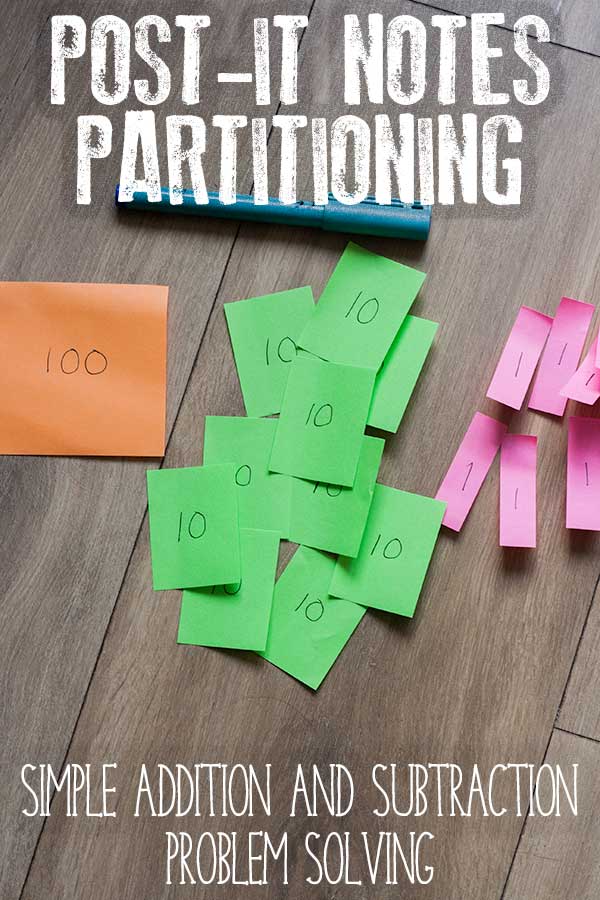
To understand how Partitioning works children have to have an understanding of place value – our Apple Place Value Booklet will help with this as will out place value leaves and the place value game we have. From that understanding, we move to adding and subtracting with two-digit numbers at first. Now in school, you may have seen them using blocks, Numicon or other tools and at the end of this article I have got some resources that you may find useful that you could add to your own resources at home, however, it is an expense so I have a much easier method to share with you today. Our Post-it Note Partitioning which will help with addition and subtraction.
Materials Needed for Post-it Note Partitioning
Affiliate links are provided for products in this post so you can see the products that we used. If you purchase through these links we may earn a small commission/
Pen or Pencil
I always have a selection of different post-it notes to help with homework, mathematics and for my own use around the house and in my office so I use different colours depending on what I have available at the time.
Preparation Needed for your DIY Partitioning Manipulatives
On the page marker post-it write the number 1 – when your child is starting out with partitioning of numbers you will just need 9 set aside but as they progress to more difficult sums it’s worth setting aside 19 that you can then use to switch out with 10’s when needed.
On the small post-it’s write the number 10 – again set up 9 of these
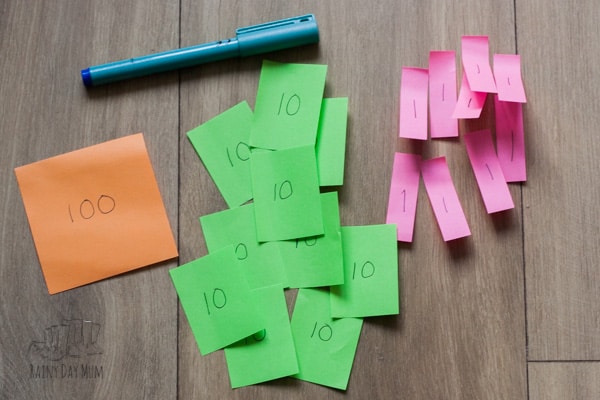
On the square post-it write the number 100 – although initially you will be only working to 100 it’s worth getting your child used to having 100 there as well.
The rectangle post-its will be the problem pad – all of the number sentences, sums will be written on.
Partitioning the basics
Partitioning is taking a number and dividing it into its different values – e.g. 100’s, 10’s and 1’s. In the UK this is currently called Hundreds, Tens and Ones, when I was growing up it was Hundreds, Tens and Units.
The Number 53 is made up of 5 10’s and 3 One’s – 50 + 3.
Addition with Post-it Partitioning
This method works when your child is first starting out with addition using partitioning – in another post, I will move onto the next phase.
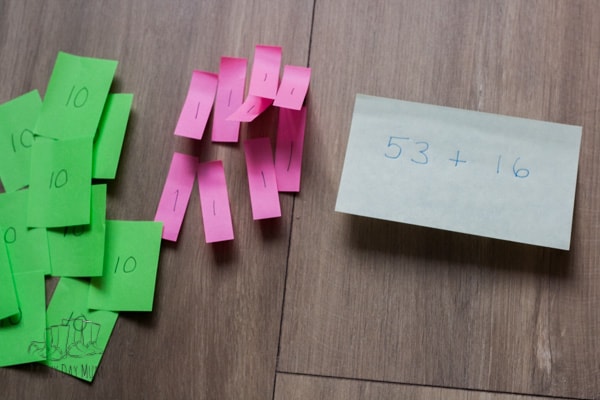
Take the addition problem – e.g. 53 + 16 = ?
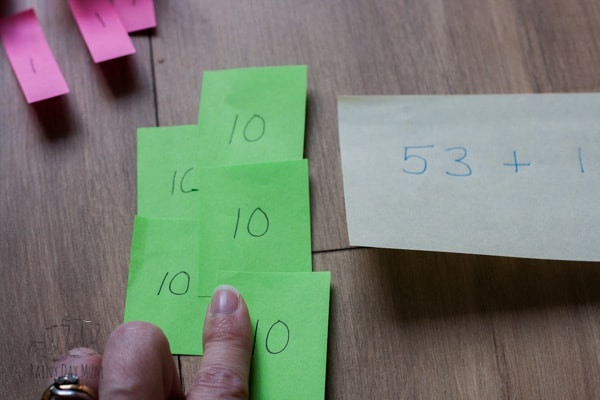
With the first number partition it out – 5 10s and 3 1s.
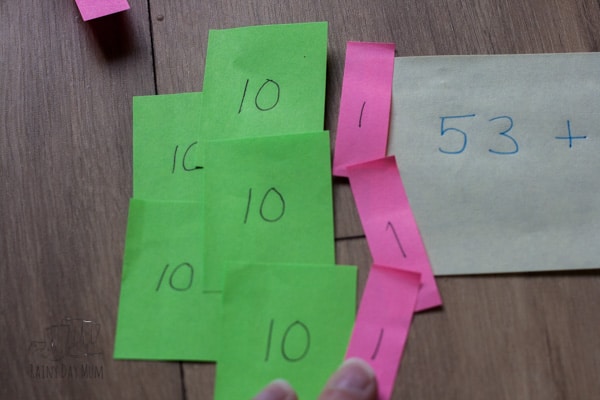
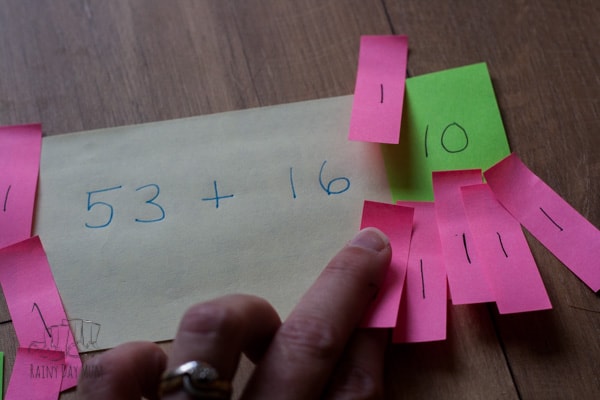
Then the second number – 1 10 and 6 1s.
Place these under the respective numbers.
Now combine them – First the ones – 6 1s + 3 1s = 9 1s.
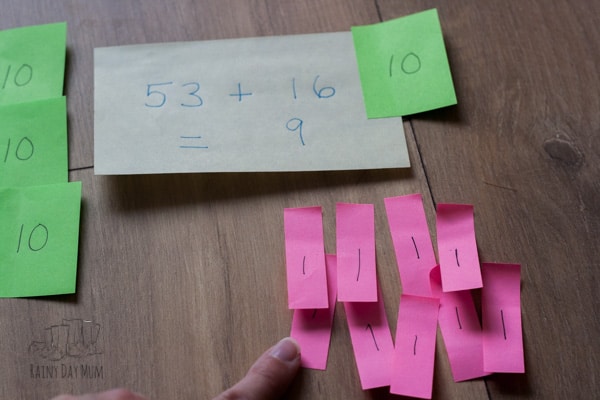
Then the tens – 5 10s plus 1 10 = 6 10s.
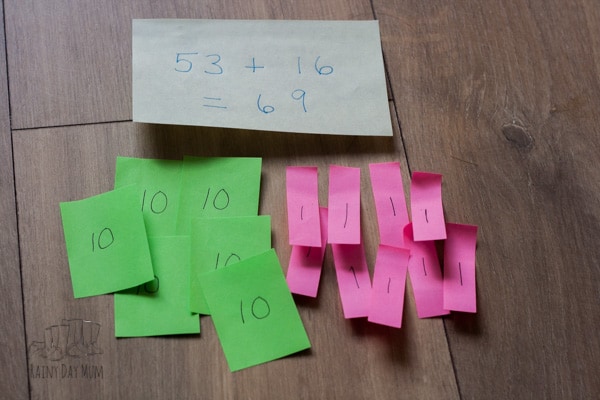
So the answer is 6 10s + 9 1s or 60 + 9 so 69.
Subtraction with Post-it Partitioning
Again this method is the beginning method for subtraction it is assumed that no borrowing will be needed.
The subtraction problem example is 78 – 43 = ?
Start by partitioning the first number – 78 = 7 10s and 8 1s.
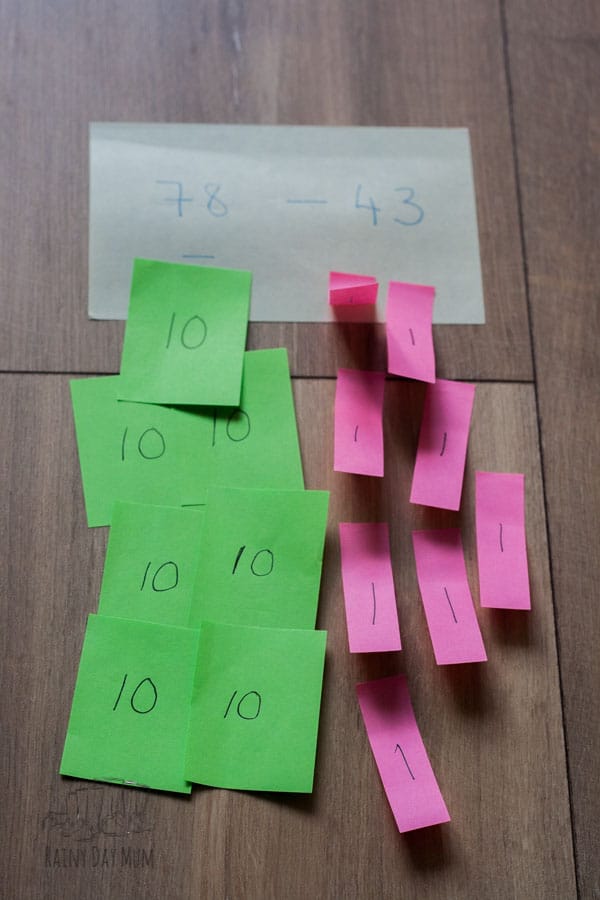
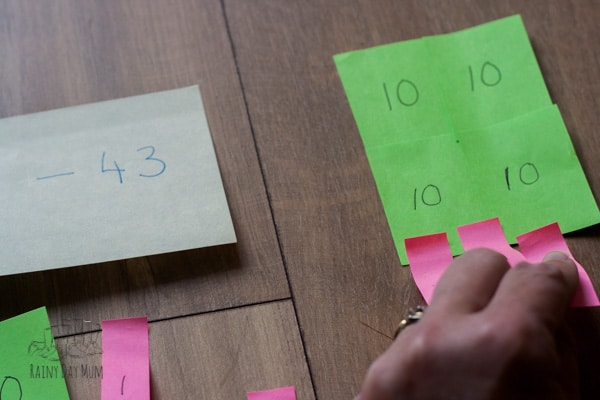
Now take away the 3 1s.
Now take away the 4 10s.
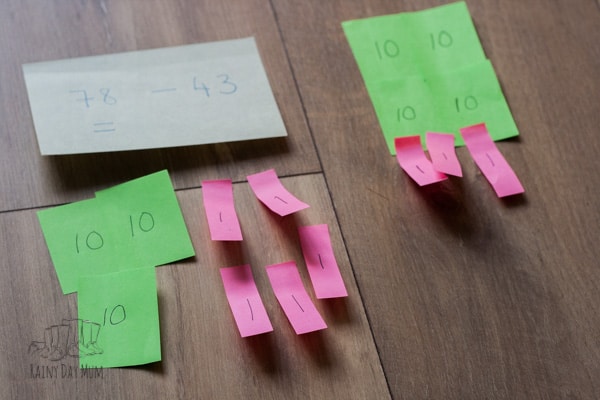
Count the remaining post-it notes – 3 tens and 5 ones.
The answer is 35.
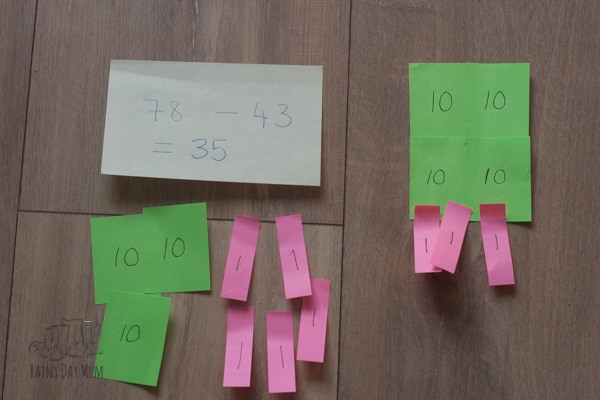
Pin this Handy Partitioning DIY to Find Again

Share this DIY Math Resource with Others on Facebook
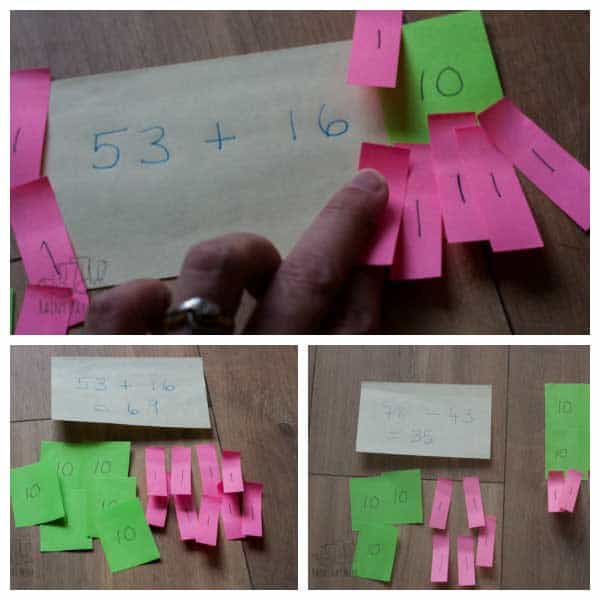
Cerys Parker
Cerys is a marine biologist, environmental educator, teacher, mum, and home educator from the UK. She loves getting creative, whether it is with simple and easy crafts and ideas, activities to make learning fun, or delicious recipes that you and your kids can cook together you'll find them all shared here on Rainy Day Mum.

